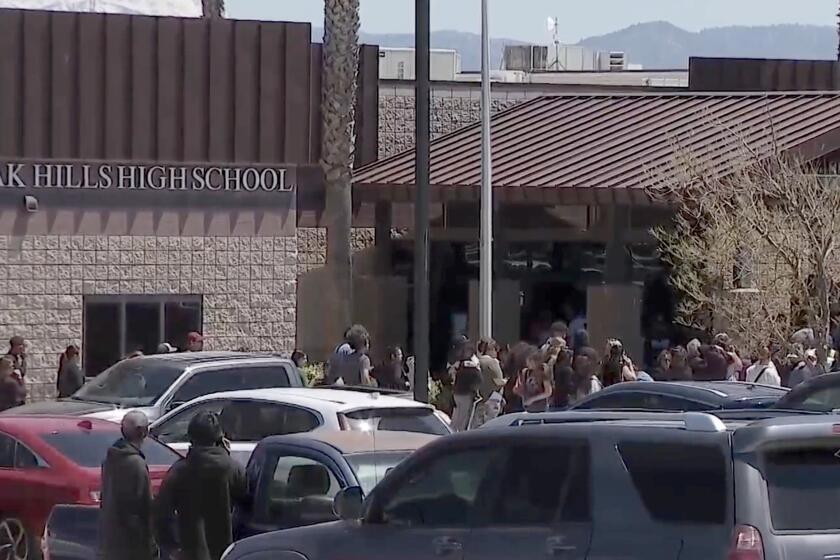A young woman whose body was found 31 years ago is ID’d in cold case as Anaheim resident
A young woman whose body was found in Anaheim 31 years ago was identified this week with the help of volunteers using the same technique that identified the suspected Golden State Killer.
After many failed attempts, experts on Tuesday matched the DNA of a body found in 1987 with that of Tracey Coreen Hobson, who lived in the area at the time, by uploading the biological data into a website called GEDmatch.com, said Colleen Fitzpatrick, co-executive director of the volunteer-run nonprofit DNA Doe Project.
Hobson was 20 when she died, the Orange County Sheriff’s Department said. A passerby found her remains — with the hands cut off — in a grassy area 50 feet from Santa Ana Canyon Road and half a mile west of Gypsum Canyon Road. A red handkerchief and a length of cord also were found in the area.
After an anthropological exam, authorities determined Hobson had been stabbed in the torso. According to experts, her body had been in the area for about two months.
Orange County deputies investigated the case for several years, and forensic experts even made the first clay-model facial reconstruction in the county at the time, but the case went cold. Then in 2005, Hobson’s DNA profile was extracted by the state Department of Justice’s Bureau of Forensic Services and uploaded to California’s Missing Persons Database and the National Missing Persons DNA Database.
Still, there were no results.
More than a decade later, the Sheriff’s Department gave the cold case another try. In August 2018, investigators partnered with the DNA Doe Project, a forensic genealogy organization created in 2017.
“We used the same technique used with the Golden State Killer case,” Fitzpatrick said.
The DNA Doe Project sent Hobson’s DNA to a lab for genome sequencing. A bioinformatics expert reduced the data to a file that resembled what would be uploaded to Ancestry.com, and that file was uploaded to GEDmatch.com.
“Then our team of genealogists went to work and looking at her so-called DNA cousins and finding matches for them,” Fitzpatrick said. “Eventually we were able to find enough matches to her grandparents to identify her uniquely.”
GEDmatch is used by companies to compare DNA data, but the public can’t submit their own. It has only a million data sets, compared with 15 million on Ancestry.com.
Fitzpatrick said the DNA Doe Project was the first to publicize its successful use of the genome-mapping technique in early April. The suspected Golden State Killer’s identification came two weeks later.
alejandra.reyesvelarde@latimes.com
Twitter: @r_valejandra
More to Read
Start your day right
Sign up for Essential California for news, features and recommendations from the L.A. Times and beyond in your inbox six days a week.
You may occasionally receive promotional content from the Los Angeles Times.







